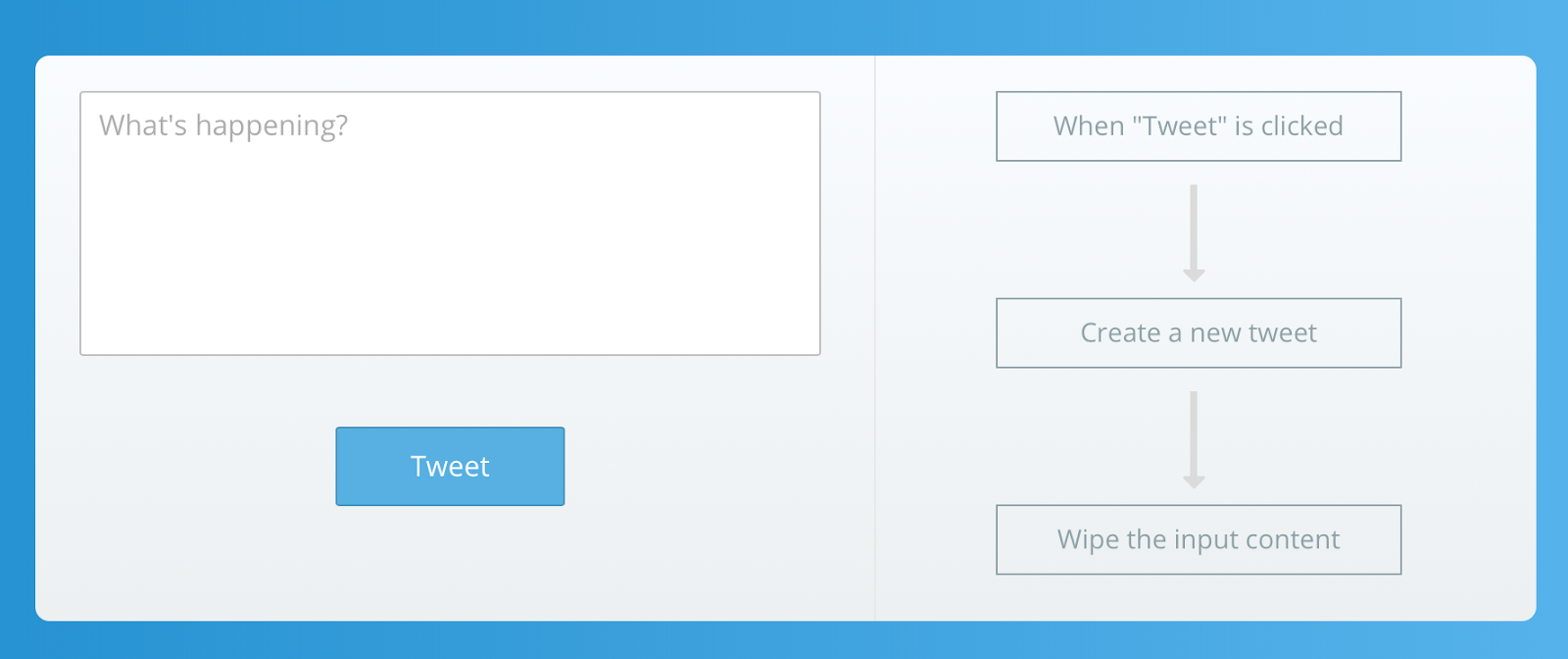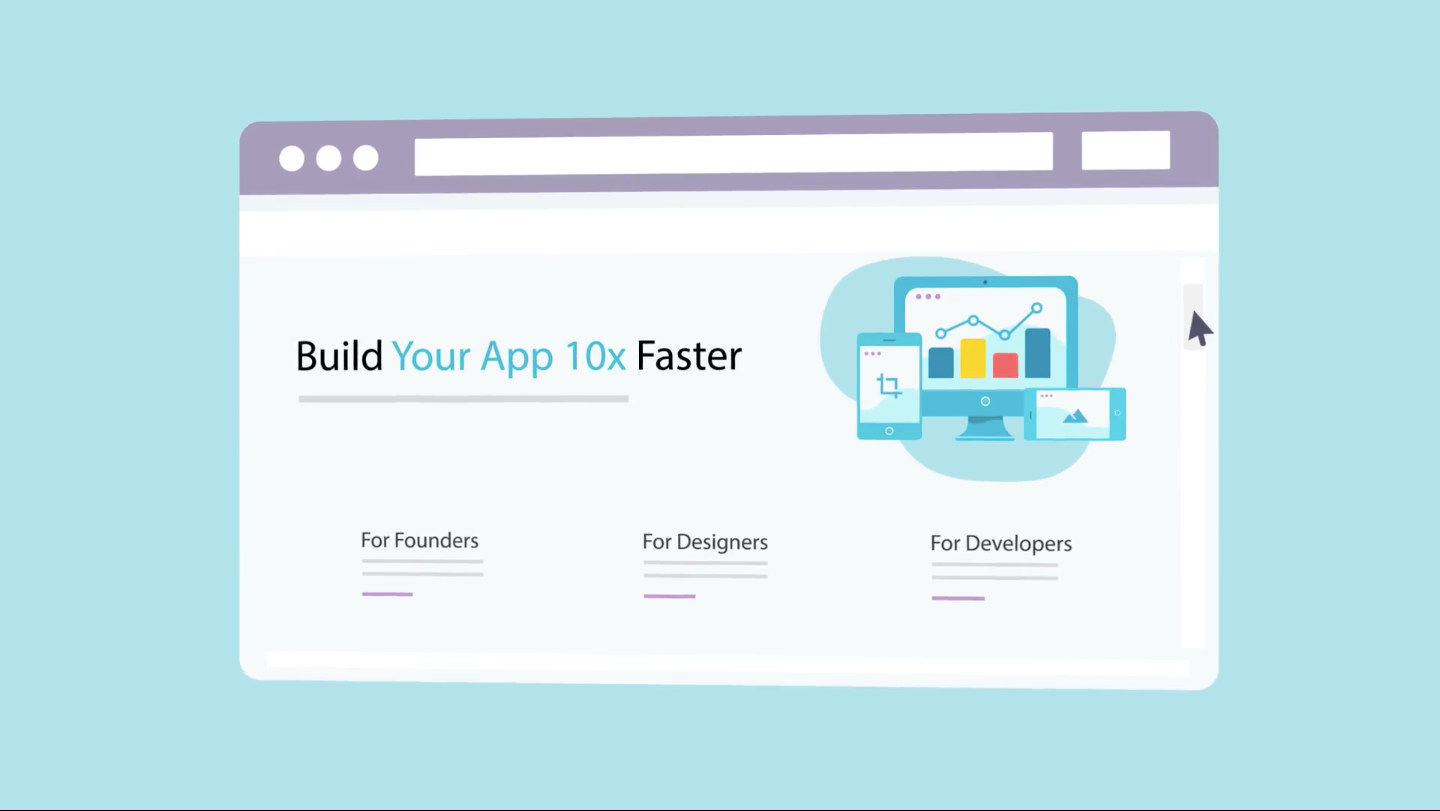
Let’s face it, with the speed the tech world is growing at the moment, it’s hard to predict how the art of coding will evolve. What we know is that code sits at the root of all technology.
When we reflect on the subject of whether coding is becoming obsolete, opinions vary. Some say machine learning will replace the need to manually write code, because computers will be trained to code themselves. Others believe that because coding can be tedious, developers will be able to use their analytical skills in more enjoyable ways than writing code.
We believe the art of coding remains necessary, yet web development and programming as a whole is facing a revolution. The ability to build a website or application is becoming available to regular people — not just the coding masterminds, by using very powerful, but simple tools. This will very soon change the face of business, technology, and culture. Read the impact of this change in “How I spent $50K in 2 years then pivoted in 2 weeks for $0”.
History & Overview
Before we get to talking about the No-Code Revolution and how this will influence development, let’s stop and reflect on history. Specifically, let’s look at the similarity between software engineers today and telegraph operators in the 19th century.
When Samuel Morse developed the telegraph in the 1830s, his invention revolutionized communication. Morse Code was developed, which allowed complex messages to be transmitted through basic inputs. Yet, in order to send or receive a message, you had to have a skilled telegraph operator on each end.

The telegraph is not used anymore as a main communication tool, but it stays at the root of other inventions that appeared in 21st century, such as the telephone, fax machine, internet, and smartphones.
In order to send a message electronically back in the 19th century, you either had to be capable of writing Morse Code or hiring a telegraph operator to help you send and receive the message. If we draw a parallel, it relates to web development today.
If you are looking to build a web or native application, you either have to be capable of writing code or hiring a developer to do it for you. Both telegraph operators then and web developers now had rare skills and experienced good pay. However, for telegraph operators, this comfort and fortune all came to an end once the next evolution of technology rendered their skills obsolete. Could a similar change be quickly approaching web developers?

When further considering this subject, the same parallel applies to other events in the history of technology.
Сo-founder of Bubble, Emmanuel Straschnov, compares the impact visual programming will have on society to the impact word processing applications have made. The average person — heck, the average seven-year-old — who sits at a computer, can now compose and send an electronic document in minutes. Prior to Word processors, this would have required specific skills and considerably more time. (Read more on this subject in this article)
Similarly, visual programming will make digital creation accessible to the masses. Many have been sitting on ideas for years, but feel constrained by their ability to finance their dream. Visual Programing will provide to such people a powerful social and economic platform that democratizes their ability to maintain an online presence. We’re entering a new age, and it’s going to be beautiful.

The Rise of Personal Computing
Back in 1880, the U.S. population had grown so large, it took over seven years to tabulate the U.S. census. The government found a faster way to do it by utilizing punch-card based computers, which filled entire rooms. In 1941, computers began storing information on their main memory. In 1946, computers were sold for business and government applications, then the first programing language was invented in 1953, which is now known as COBOL. In 1964, the first prototype of the PC was showcased, and in 1974 a number of PCs hit the market. However, it was not until 1977 when, for the first time, those who could not write code were able to make any use of a personal computer.
This timeline provides us perspective into the likely future of web development. Until recently, only coding masterminds were able to build web or native applications. Now, web development is accessible to anyone with access to internet. Soon, advancements in technology will make even the most complex development challenges achievable for the average user.
The No-Code Revolution
The No-Code Revolution began with the increased popularity of the first visual programing languages. Users were offered the possibility to build a website without the need of writing code, hiring agencies or managing freelancers. Only by dragging and dropping “code blocks” into place, a simple and functional website could be built.

But, before we get into the details of the No-Code Revolution, here are some definitions.
No-Code development platforms are visually integrated development environments, which allow users to drag-and-drop the components they wish to include in their application, connect them in a logical order and launch a mobile or web application. Such platforms unleash the imagination and creativity of any user — regardless of previous knowledge of traditional programing languages. A user-friendly visual interface allows components and third-party applications to be integrated and tested to make the application look and function as planned.

The growth of No-Code Platforms first emerged from the limited access of entrepreneurs to skilled and affordable web developers. Likewise, some development companies felt the need to reduce project turnaround time and release or iterate products more quickly. The movement is gradually growing and analysts at Forrester Research estimate the No-Code/Low-Code market will reach $15 billion by 2020.
Together with the creation of Bubble in 2012, it became possible to build not only simple landing pages or blogs, but also web applications with complex logic and functionality. Traditionally, No-Code development platforms allow minor flexibility on the front and back ends. Bubble, however, enables fine tuning down to the pixel and can define how the application reacts to any input. Let’s look at an example.
Say you are intending to build a web application with similar functionality to Airbnb or Indiegogo. Due to the rudimentary lack of functionality in traditional No-Code development platforms, building complex web applications would be close to impossible. On Bubble, with a clear idea and time to work on it, nearly anything is possible. Define the data structure, build the visual part and make it live by interconnecting those with the powerful workflows! Learn How a startup can build an MVP using No-Code.
Due to the growth and evolution of No-Code development platforms and the vast potential the technology holds to disrupt markets — businesses supporting the No-Code Revolution were created.
One such company is Zeroqode — a one-stop-shop for codeless creation. Zeroqode offers complex web app templates, all built on the advanced visual programing platform of Bubble. With their robust, functional and beautiful templates, Zeroqode is ushering us into the No-Code Revolution (read what TechCrunch has to say about this).

In Conclusion
As enterprises endure a digital transformation, they become software-driven organizations. The need to hire software development talent has become an unfortunate bottleneck inhibiting the growth of small, medium, and large companies around the globe.
No-Code platforms have the ability to disrupt entire industries, as entrepreneurial individuals or small businesses that previously were unable to unleash their ideas now flood the world with an explosion of creativity. As explained by E. Scott Menter, Chief Strategy Officer at BP Logix, “No-Code is here, and it doesn’t care about making your IT organization more efficient, its only purpose is to turn your business into a digitally integrated, audit-defying, silo-resistant object of their customers’ desire.”
Web developers are and will remain useful for the foreseeable future. However, it’s clear the No-Code Revolution has arrived, making app and web development accessible to everyday people.


No.
This spam should be treated. @csallen take note
Lots of people reported this 👍
so why is this is a scam if we are inviting to discuss the topic even if we mention our own company in the article? If you guys don't agree that coding is becoming obsolete, that's fine, but it's not a spam. Same way we transitioned from MS-DOS to Windows, we are transitioning now from coding to visual programming. The trend is evident and the sooner everyone realizes that, the better
Few questions for you.
Levon Terteryan, please hire a marketer and just market your no-code product. LEAVE CODERS OUT OF THIS!!!
Without even reading the article, I can assure everyone that: No, coding is not becoming absolute. In fact, the opposite is happening; more and more programming/coding related jobs are becoming available and there's no reason to believe that trend is going to change anytime soon.
EDIT: I gave the article a serious try, however when the author started comparing programmers to telegraph operators I had to call it quits. The proper parallel would have been between programmers and engineers who built telegraphs. And no, they didn't loose their jobs when telegraphs became obsolete; they probably started engineering work on telephones and other communication networks.
But this article was written by...the founder of Zeroqode. 🤔.
This article is just a one-sided advert it seems.
Fear of fear of coming out straight and failing
Yeah... just reported it as spam.
I have helped built a visual programming language in my past company, and it has its use cases such as building very simple workflows. But don't be fooled into thinking it will making coding obsolete. That's just naive.
For a visual programming language to do all the things that a traditional programming language (for the sake of brevity, take a common OOP language), you would need constructs like objects, classes, exceptions, variables, arrays, etc.. For performance, you'll need to introduce async operations and parallelism. On top of that, you'll need something like a powerful IDE to refactor large amounts of complicated business logic.
If your business application is more complicated than a simple workflow, the amount of effort and cost to maintain it in a visual programming language would be unfeasible. Using a tried-and-tested programming language and IDE will solve more problems than you think it may create.
coding will remain relevant but even more teaching young people creativity. Hence, technical knowledge complements "soft" skills
I don't think its becoming obsolete and definitely think more people should learn to code (myself included!)
The problem I see is that people don't know how to build something, their idea in their head or a solution they need. I'm trying to teach people how to do this without code on newco.app with video tutorials.
Am taking applications for instructors and Levon since we already know each other and I know the level of your guys work, would love to have you on :)
This comment was deleted 3 years ago.
This comment was deleted 5 years ago.
This comment was deleted 5 years ago.